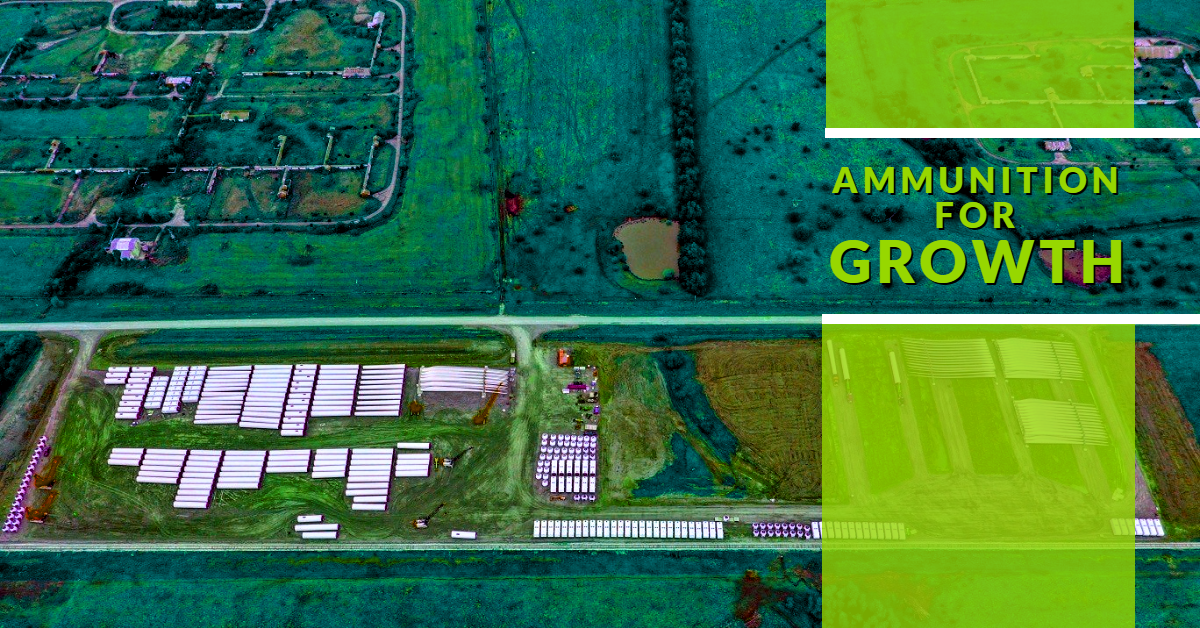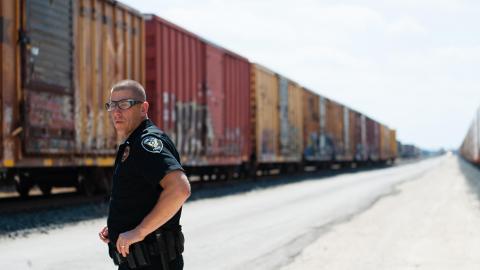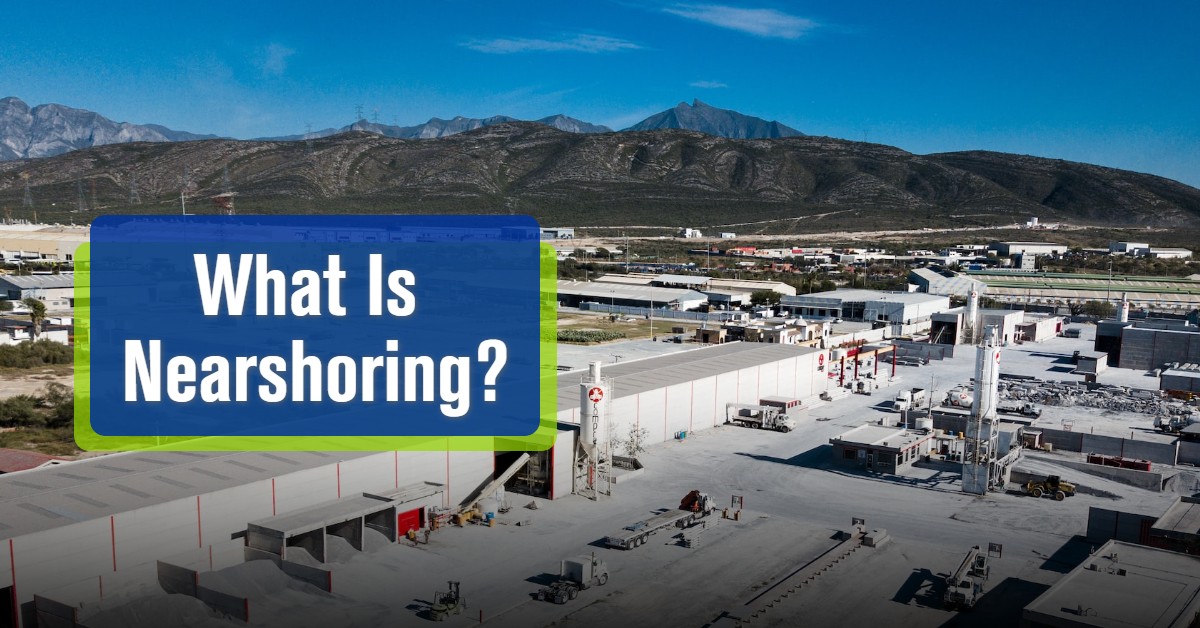In 1942, the Kansas Army Ammunition Plant was established near Parsons, Kansas. During World War II, the Korean War, Vietnam War and the Persian Gulf Wars, the plant produced a variety of ammunition, from basic artillery and mortar shells to more sophisticated munitions. The plant was closed in 2005 and officially deactivated in 2009.
What would the federal government do with the 13,951 acres of land? It took several years to answer that question. Requirements were established stating the land couldn’t be turned over to a private developer — it must be turned over to a local development authority. That’s when the Great Plains Development Authority stepped in.
In 2012, the federal government officially handed over the land, and today it has been redeveloped into the Great Plains Industrial Park, 6,800 acres of which are owned by the Great Plains Development Authority. In addition to reclaiming unused land, this rail-served industrial park has become a transportation hub that is lowering costs for shippers, spurring economic growth, and supporting environmentally friendly power. This is the story of how they did it.
Developing the Site
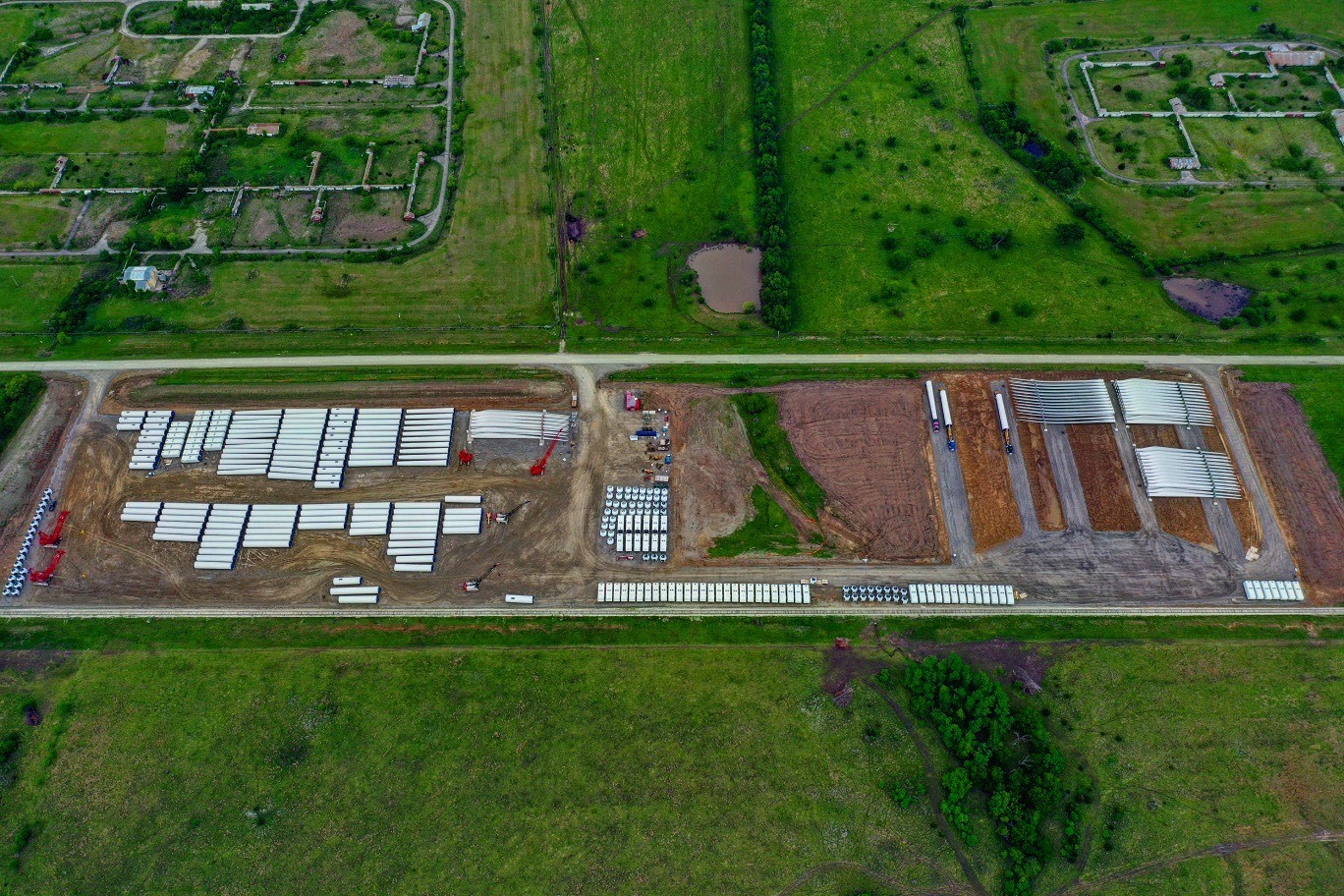
An aerial view of a portion of the Great Plains Industrial Park, including the laydown area for wind turbine components.
The former Kansas Army Ammunition Plant came with existing infrastructure that made it perfectly suited for redevelopment — it has its own water, sewer system, and electrical substation, as well as 30 miles of railroad track.
“There is a huge benefit of looking at this location due to the already existing assets. There is road and rail infrastructure in the park, and buildings that were built for the plant that are in very good condition if they meet business needs. There is also significant greenfield land that can be developed to meet specific needs,” said Lindsey Douglas, Deputy Secretary, Kansas Department of Transportation. “Taking existing assets and fine tuning with new development needs provides an opportunity to save time and money on development.”
But how, exactly, would the land be redeveloped? Because of the site’s history, an industrial park was a perfect fit. “Manufacturing was already going on on the footprint for years. So that's what made it a natural fit for an industrial park,” said Brad Reams, Industrial Park Director for the Great Plains Development Authority. “When we took possession in 2012, it was always the idea that we would go back to our roots, which was an active rail yard.”
To make the site suitable for future use, the U.S. Army invested $70 million to clean the site. The Great Plains Development Authority also made its own investments. While roadways and rail existed, the tracks hadn’t been used for rail freight in years and were in need of rehabilitation. In order to make sure the track could handle the freight needs of companies locating at the park, the Great Plains Development Authority set out to update about 43,000 feet of track – a total of just over 8 miles.
Rehabbing the Rail with the Help of the Kansas Department of Transportation
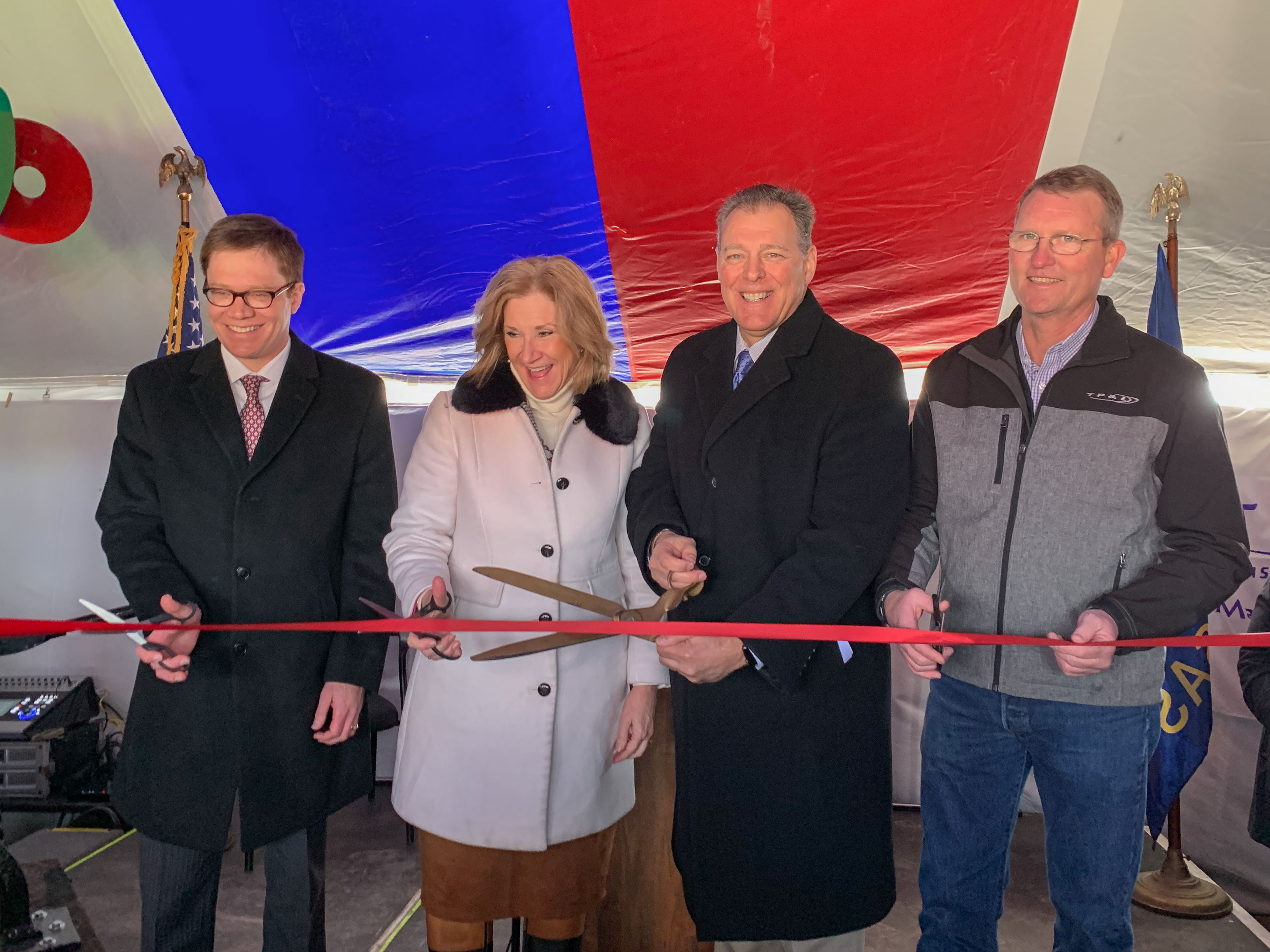
(Left to right) Kansas Department of Commerce Secretary David Toland, Kansas Department of Transportation Secretary Julie Lorenz, Great Plains Development Authority Vice Chairman Gary Beachner, and TP&L President Jim Orr participate in a ribbon cutting during an event to celebrate investment in the Great Plains Industrial Park on February 20, 2020.
Rehabilitation of the rail included updating the existing infrastructure, which included two rail bridges, and upgrading the park’s connection to the Union Pacific mainline with a 115-pound continuously welded rail (CWR) segment at the south end of the park, all of which would allow the park to handle the heavy freight of future park tenants. But this would require a significant capital investment.
That’s when the Great Plains Development Authority reached out to the Kansas Department of Transportation (KDOT). Through its economic development program, KDOT was able to provide a $1.64 million grant to address the needed rail improvements. From there, things progressed quickly. “It was 67 days from the first day that we called inquiring about what grant monies might be available to the first train coming through,” Reams said. “It was a very quick process, but KDOT was committed to ‘moving at the speed of business,’ as Secretary of Transportation Julie Lorenz says. That's kind of rare.”
Douglas said teamwork played a role in the speed and success of the project. “Something that was unique to this project was the team coordination of all parties. There was a very aggressive timeline and the only way to hit that was to have all parties engaged in the process,” she said. “Great Plains, TP&L [the park’s first rail-served tenant], Union Pacific and KDOT all had to communicate and execute their respective roles to meet the schedule to make the project a success.”
Reams said having rail access at the park will ultimately lower transportation costs for companies who locate there. “Being able to move freight long distances is obviously cheaper by rail than it is by truck, and so having that available for anyone who's interested in landing in your community is vital,” Reams said. “We see rail as a huge asset of ours.”
Douglas agreed that there are economic benefits to having rail access at the park. “Transportation costs are such a significant part of the balance sheet for businesses, and having both truck and rail access at Great Plains will help keep transportation costs competitive for businesses looking to locate there,” she said.
Providing rail access offers benefits to the state of Kansas, too. “The development allows for heavy freight to be transported via rail, reducing the number of oversized loads traveling by truck and reducing stress on Kansas roads and bridges,” Douglas said. “With large freight like wind turbine blades and other components, the ability to ship it by rail decreases the number of oversized loads on our roads.”
Reams said taking trucks off of roadways relieves some of the economic burden of maintaining roadways. “When you can add longevity to an infrastructure system that always needs assistance and always needs state dollars, it’s a win,” he said. “If you can run off of rail, you're doing that.”
As more companies locate at the park, the benefits to the community will multiply. “The $1.6 million grant was used to upgrade the rail infrastructure, but the benefits far exceed that initial investment,” Douglas said. “For this project, the rail investment secured jobs during construction, with the TP&L operation at the park, and for the wind energy development. The investment will continue to reap benefits as more development opportunity can be realized in the park. Having both highway and rail access makes Great Plains a very desirable location for development and will continue to attract new jobs to the community and region.”
Welcoming the First Tenant — and Shipment
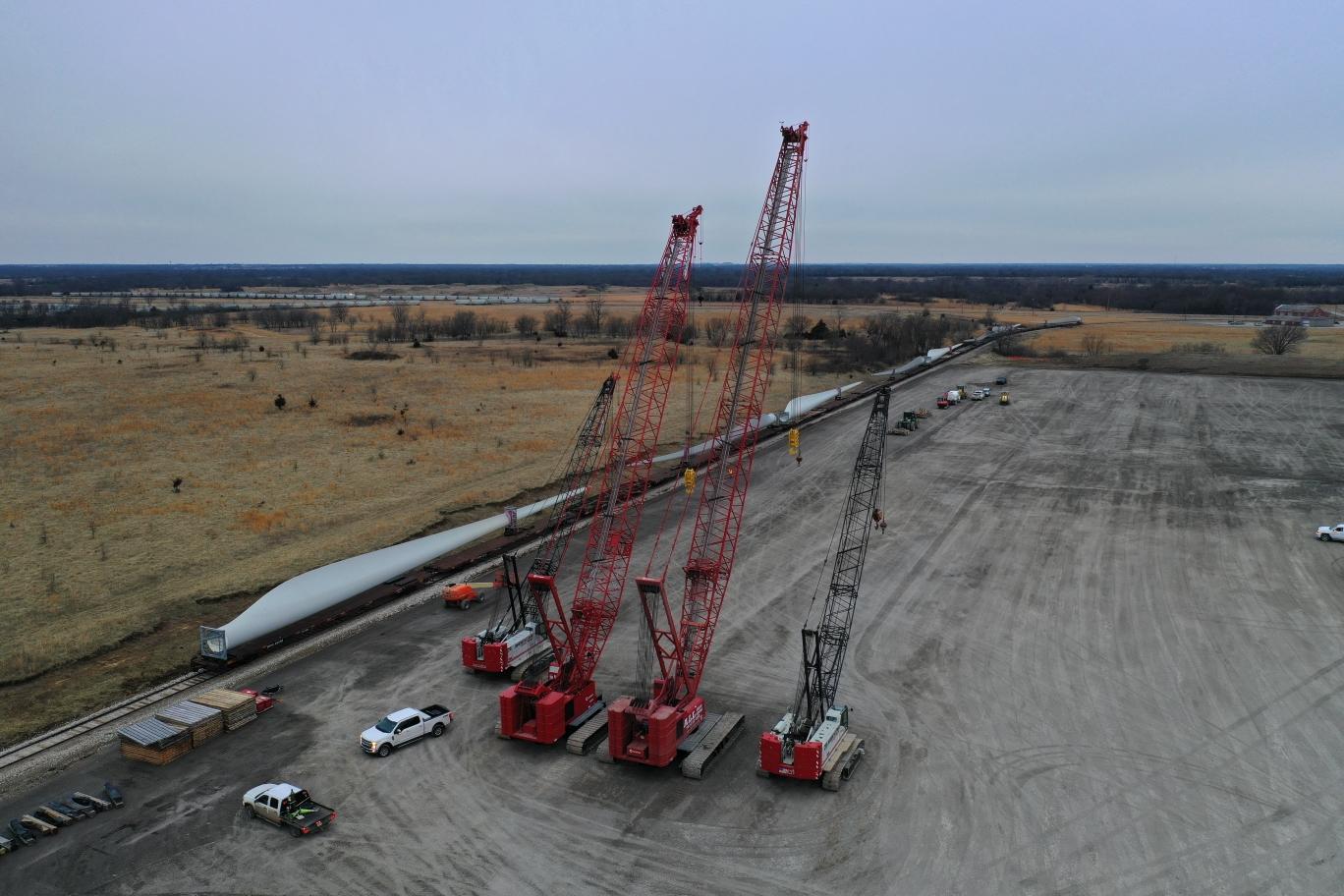
The first train in 40 years arrived at the Great Plains Industrial Park on February 10, 2020 carrying wind turbine components.
But what type of companies would be an ideal fit for the park? “When we started talking about opportunities, one of the things that came up was development of wind energy in Southeast Kansas,” Reams said. “Trucking is a tough business, and it's certainly tough to get oversized loads to certain locations. What if we could utilize our rail to get wind components to the Kansas wind projects, or wind projects in the four states as well? And so the conversation started.”
The Great Plains Industrial Park’s first rail-served tenant was TP&L, which could land large wind turbine components that arrive by train, then transload them to trucks for final distribution to nearby wind farm sites.
At 2:30 p.m. on Monday, February 10, 2020, the first train arrived to the site in over 40 years. It carried 27 wind turbine blades on 65 cars and took approximately 16 hours for TP&L to unload.
With its first tenant up and running, the industrial park is ready — and equipped — for more. The park offers:
- 250-acre tracts
- Large parcels of land that can be groomed for the storage of equipment, machinery or large component parts
- 106 miles of roadways
- 30 miles of rail with direct service provided by Union Pacific
- 19 cold storage buildings
- 95 earth-mounded magazines
- Water and wastewater plants
- Kansas' lowest electric rates
- On-site fiber optics
Beyond these features, Reams said the site also offers companies other benefits. “We have a great work ethic and a great amount of labor in the area that is used to being manufacturer based, we happen to be centrally located, and we have access to a great rail line and highways. So we make a great distribution point,” he said. “We also have a secure footprint, which saves companies money because their inventory doesn't have to be quite as locked up. And you don't have right-of-way to purchase.”
For these reasons, the site is well suited for rail-served operations, warehousing, and advanced manufacturing and remanufacturing. With available acreage and existing track infrastructure, the site offers speed-to-market solutions for future customers looking for a fast and easy connection to rail.
Three Times the Environmental Benefits
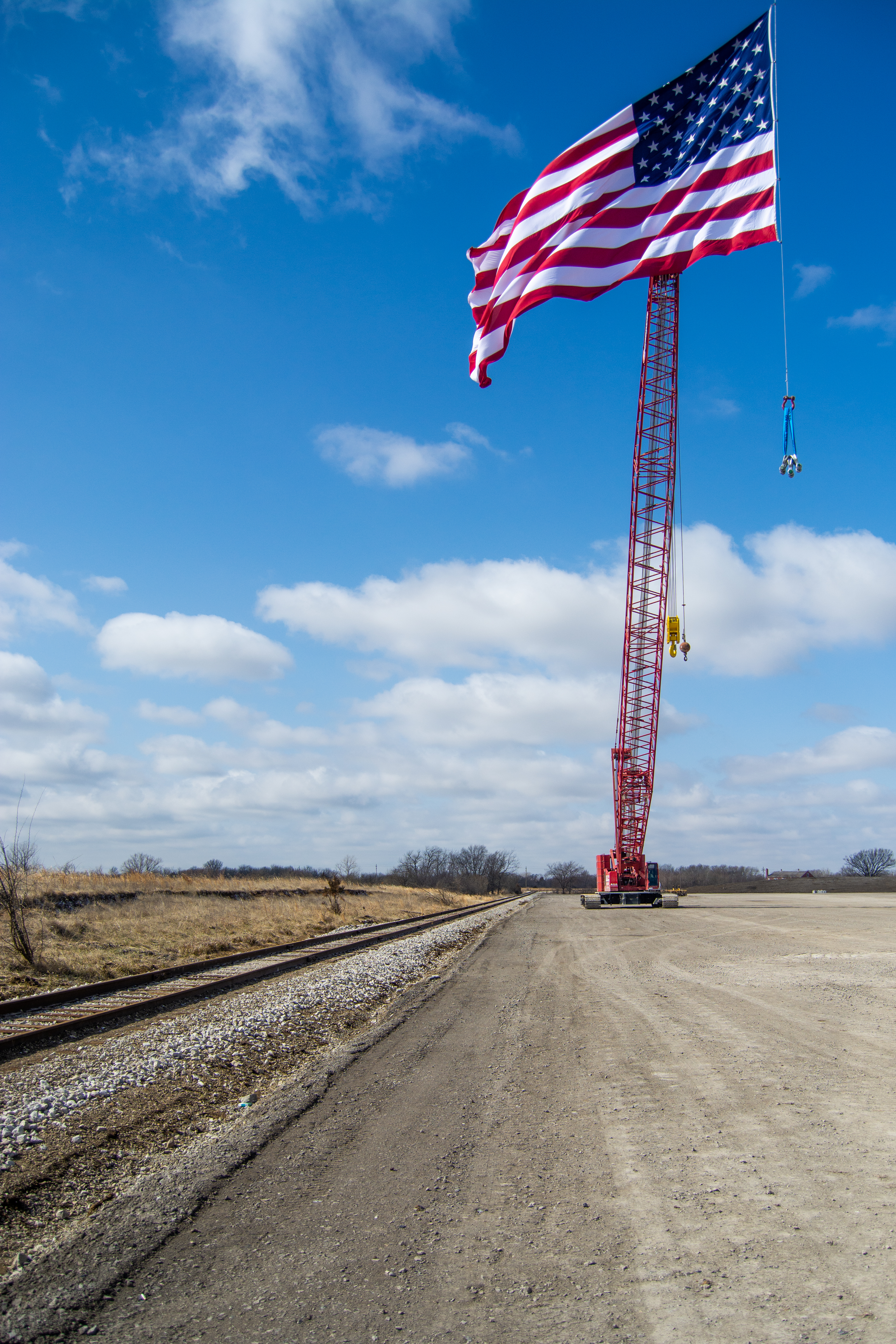
Freight rail is the most environmentally sound way to move freight over land. “Railroads are a great example of green transportation. Any way you can take more trucks off the road, which helps the environment and helps the state, it’s a win,” Reams said.
The Great Plains Industrial Park also comes with environmental benefits.
By redeveloping an existing piece of land, using rail (the most environmentally sound way to move freight over land), and using that rail to deliver components for sustainable energy, the environmental benefits of the Great Plains Industrial Park project are threefold.
“There was an immediate environmental benefit of the clean-up that occurred to convert the plant into an industrial park,” Douglas said. “The added rail service at the park will allow for more freight to be delivered by rail to this region. And sourcing the wind components closer to the farms will reduce the emissions from having to truck the components from further distances.”
Reams said supporting renewable energy harkens back to the state’s roots, while also helping the state progress. “Kansas is known for mining. We spent decades mining the ground, and now we’re mining from the sky with wind energy,” he said. “This site supported more than 7,000 employees on a daily basis and over 25,000 total during World War II. We believe we can be that economic engine again, and green energy allows us to do that. Railroads are also a great example of green transportation. Any way you can take more trucks off the road, which helps the environment and helps the state, it’s a win.”
Learn More
Do you want to learn more about locating at Great Plains Industrial Park, or getting rail access for your business? Get in touch.
Related Articles
- Transportation Modes Revealed: Rail
- How to Write a Successful BUILD Grant
- Site Selection: 9 Points to Ponder Before Choosing Your Next Industrial Location
- Transloading Decoded
- What Can You Ship by Rail?
- Rail 101 FAQs
- Roadways vs. Railways

